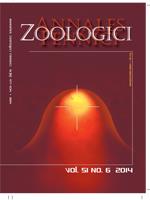Population demographics of northern ungulates are influenced by density and weather conditions. For caribou and reindeer (Rangifer tarandus) that dig in the snow for winter food, snow accumulation and duration of the snow layer are suggested to be influential. Indices based on large-scale alterations of atmospheric pressure such as the North Atlantic Oscillation (NAO) are connected to climate change and may predict ecological processes better than does local weather. Some empirical evidence of the effects of climate variation is available for Arctic and alpine populations but practically none for sedentary, boreal reindeer. We examined the effects of population density, winter and spring NAO, snow accumulation, and the timing of snowmelt on reproductive success (here the calf/female ratio) and on mean summer body mass of calves in a north-boreal, free-ranging herd of semi-domesticated reindeer in northeastern Finland. In this herd, day of snowmelt explained variation in the calf/female ratio and in the midsummer body mass of calves, more so than NAO, winter snow depth and population density.
How to translate text using browser tools
29 December 2014
Reproductive Rate and Calf Body Mass in a North-Boreal Reindeer Herd: Effects of NAO and Snow Conditions
Pekka Aikio,
Ilpo Kojola
ACCESS THE FULL ARTICLE

Annales Zoologici Fennici
Vol. 51 • No. 6
December 2014
Vol. 51 • No. 6
December 2014




